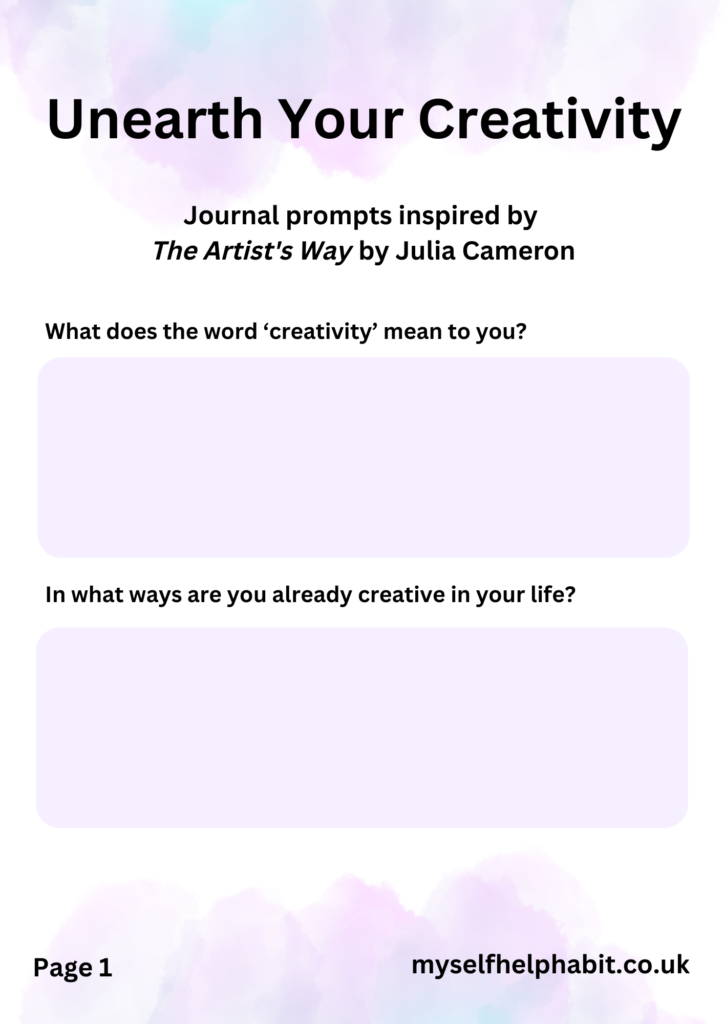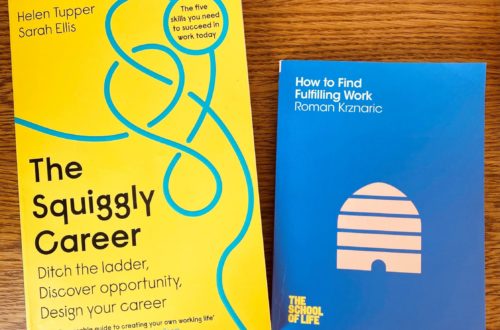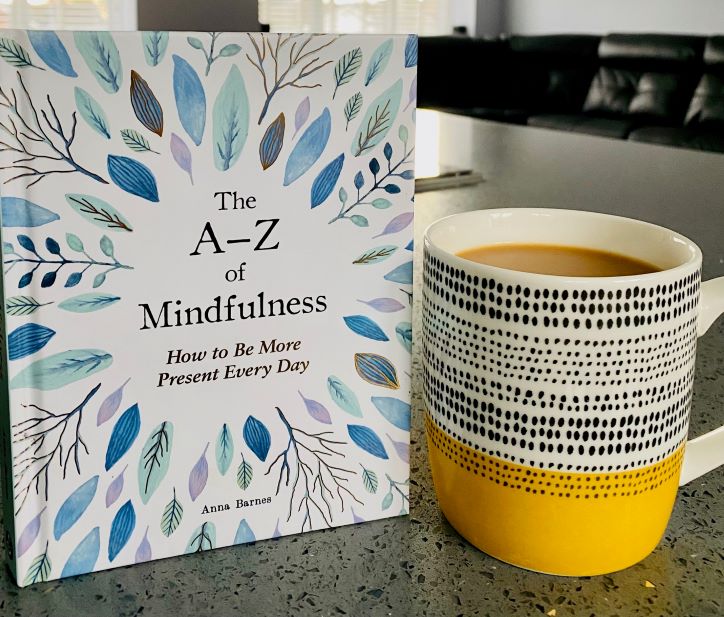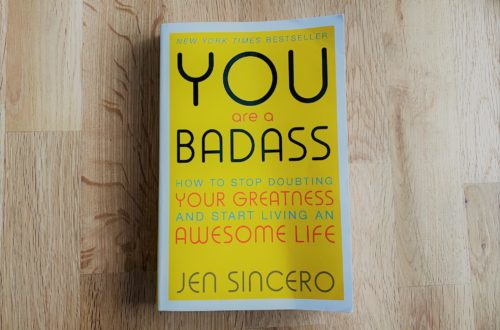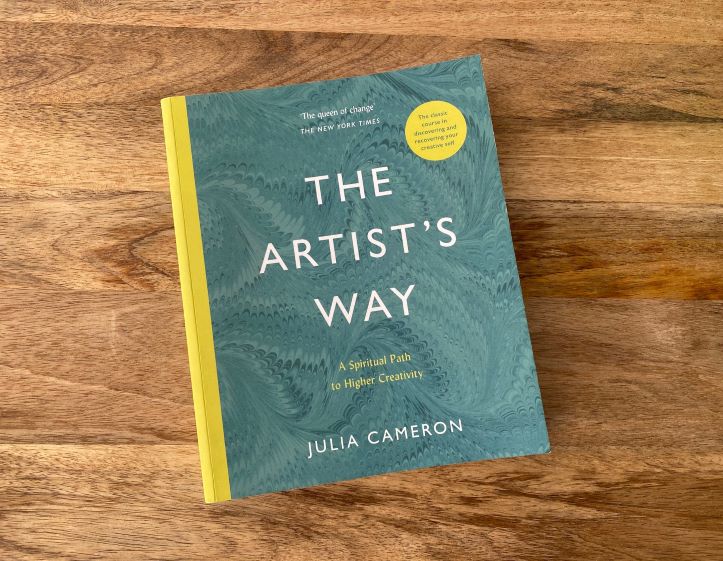
Unearth your creativity (and discover yourself in the process!)
Review of The Artist’s Way* by Julia Cameron
The ability to be creative is not just reserved for the artists of this world, it is within us all and can be expressed in a multitude of ways in our lives. Personally, I have always craved some kind of creative outlet but found that I had dropped many of the creative activities that I enjoyed in my younger years while continuing my education, getting a ‘proper job’, and raising my family. When my children came along, exploring my creative side mainly meant running around and engaging in imaginary play with them and doing the odd bit of Playdoh or finger painting!
*Disclosure: If you buy books linked to my site, I may earn a commission from Bookshop.org, whose fees support independent bookshops.
Since discovering that creative activities are hugely beneficial to my wellbeing, I have wanted to explore my creativity further, to finally give it some priority in my life, and to deal with any apprehension I felt about doing that. This led me to pick up a copy of The Artist’s Way* by the renowned teacher and author, Julia Cameron.
Perhaps you are keen to reignite your creative side and are in the process of creating (or wanting to create) something in your personal life or career? In The Artist’s Way, Cameron shares ideas and activities that will enable you to uncover and work through any creative blocks that are in your way and, at the same time, she takes you on a wonderful journey of self-discovery!
Read on to find out more about the activities that are included in The Artist’s Way and what my key takeaways were from the book. You can also download this 5-page workbook to help you to unearth your creative self (just click on the image below).
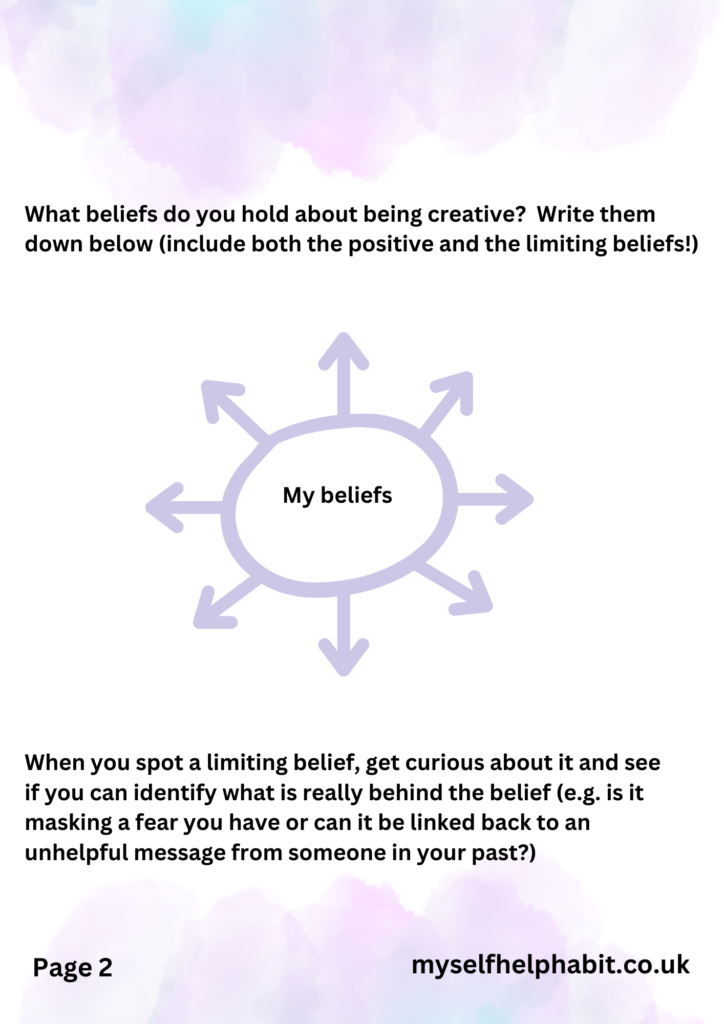
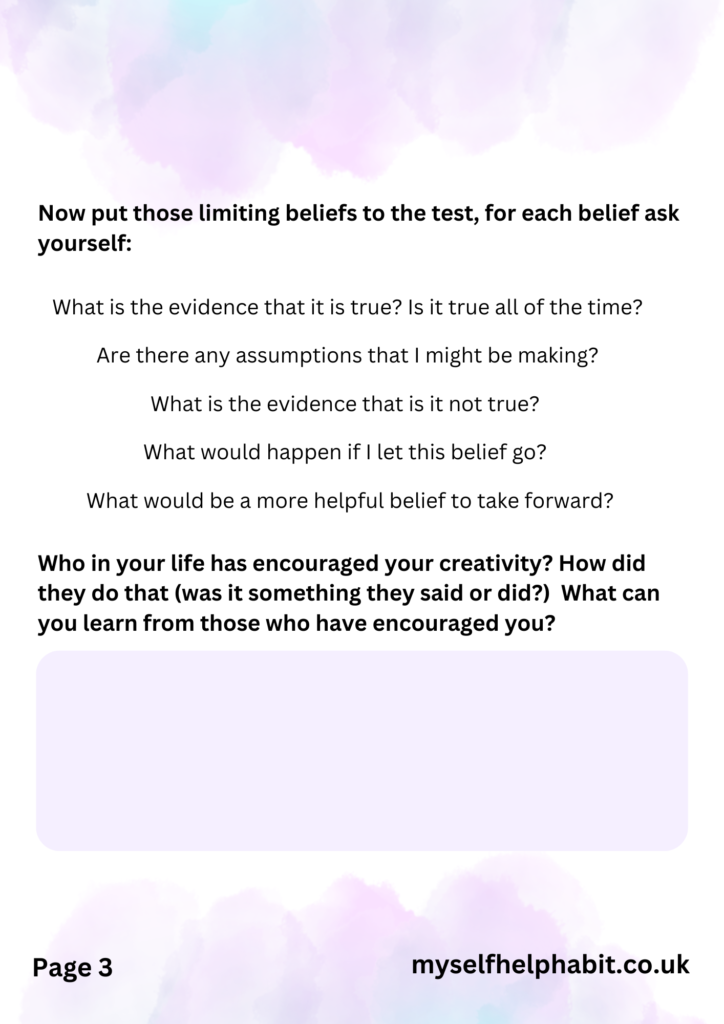
Firstly, some things to bear in mind before reading The Artist’s Way:
It requires commitment
The book is structured like a 12-week course and requires an investment of your time (up to 10 hours a week). This involves reading a chapter of the book every week and doing the exercises that you feel you need to explore.
I treated the book like a course and committed to it accordingly (Cameron even includes a contract to help you to stay accountable). However, if you are stuck for time then look at what you can commit to, perhaps breaking it down even further than 12 weeks, narrowing down the number of activities you do each week, rejigging your priorities, or doing it at a time of year when you have a clearer schedule and more room to breathe!
It may involve confronting some difficult, past experiences
The activities in The Artist’s Way may evoke some strong emotions and does require some digging into your past to identify where your creative blocks have come from. For example, exploring both the helpful and unhelpful messages you received about art and creativity as a child which may still be influencing you now. Make sure you are well supported while you are doing these activities (you could confide in someone you trust or speak to a therapist/coach about your insights) and take good care of yourself throughout the process!
There are lots of references to spirituality in The Artist’s Way
Cameron asserts that ‘creativity is a spiritual force’ (p.209) and throughout the book refers to it as something that is derived from God. If this does not align with your beliefs then you will need to think about what creativity means to you and where you think it may stem from. Cameron does encourage you to come to your own interpretation and suggests some alternative ways of thinking about creativity, such as using the terms ‘creative energy’ or ‘flow’. I found that I could get on board with the idea of having an innate ‘creative energy’ that I could tap into and nurture.
Additionally, Cameron asks you to notice moments of synchronicity which she defines as a ‘fortuitous intermeshing of events’ (p.65). She asserts that ‘The universe is prodigal in its support’ (p.67) and when you start on your creative journey and decide what you want to do, the ‘how usually falls into place’ (p.66). While Cameron states that you do not have to believe this, she does ask that you keep an open mind and look out for such moments.
What exercises are included in The Artist’s Way?
As well as being full of journal prompts and activities related to each week’s theme, Cameron outlines two important practices that need to be done throughout the 12-week period (and beyond it).
Morning Pages
Morning pages consist of 3 pages of ‘stream of consciousness’ writing and these are written as soon as you get up in the morning. You write down exactly what is on your mind, whatever it may be, and you do not stop writing until you have filled 3 pages. Cameron refers to the morning pages as a type of ‘meditation’ in which we ‘declare to the world – and ourselves – what we like, what we dislike, what we wish, what we hope, what we regret, and what we plan’ (p.209).
I found it difficult to write first thing in the morning because a) I’m not a morning person (no ‘5am club’ for me thank you very much!) and b) I’m a mum so on most days the school run beckons and I have little people getting up with me! That said, I committed to doing them daily, once I had returned from the school run or got my children settled down with their breakfast. I have now incorporated some free writing into my morning journal routine because writing morning pages proved to be a very cathartic experience. They provided a unique space where I could be truly honest with myself and acknowledge my thoughts and feelings.
Artist Dates
Cameron describes an artist date as an act of ‘receiving’ where you are ‘opening yourself to insight, inspiration, guidance’ (p.18). Basically, it involves taking yourself off somewhere (on a weekly basis) for some time alone to do something that is enjoyable and that will put you back in touch with your creative self. This could mean going on a walk somewhere scenic, visiting a local attraction, or even getting yourself down to your local craft shop.
As lovely as this all sounds, Cameron warns that you will probably find a whole host of reasons as to why you cannot do your weekly artist’s date. In all honesty, and maybe this is the work I need to do, I did find it really tricky around my role as a mum! I couldn’t manage, or seem to justify, the two hours alone time that is recommended and I felt guilty about having that time on my own. Cameron is aware of such difficulties and states that ‘Defending our right to such time takes courage, conviction and resiliency’ (p.97). She suggests that you plan your artist date in advance, schedule it in your diary, and then commit to doing it (like it’s a non-negotiable!)
In the end, I managed to take advantage of half an hour to take myself off on a walk around my local area and to notice the parts that fired up my imagination (which I later turned into a piece of creative writing). Although I couldn’t commit to doing an artist’s date every week, I have decided to make more time for myself on a regular basis so that I can open myself up to creative inspiration (and at least give myself a fun day out!)
My top ten takeaways from The Artists Way
The weekly check-ins at the end of each chapter provide you with an opportunity to reflect on the reading and exercises that you have completed and to gather any insights from your artist dates and morning pages (and, rest assured, there will be many!)
Here are some of the key insights that I am taking with me from my reading of The Artist’s Way:
1. Reconnect with the things you love
A large part of the book is focused on reconnecting with who you are. This involves discovering your passions, your sense of fun and all the things that you would love to do (but may have been putting off or dismissing). You can start this process by considering:
- What brings you joy?
- What or who really inspires you?
- What are the things that you like?
- What captures your interest?
- What sorts of activities would you love to try?
Write down your answers to these questions and then think about how you could start doing more of the things that light you up.
2. Be careful who you let into your support network
Surround yourself with people who will be supportive of your creative projects and who are in a good position to offer you constructive guidance and feedback. Do not allow others to sway you off course and diminish your creative ideas or the work you have produced. Cameron helpfully includes some advice on handling negativity and criticism from others if this is a particular concern for you!
3. Identify where you are holding assumptions and creating obstacles for yourself
You could be thinking that you are too old/young to get started on your creative journey or worrying too much about what other people think, you may be over-working or constantly procrastinating so then never get any time for creativity, or you might be assuming that you will have to overhaul your entire life to be an artist. There is often some kind of fear that lies behind these unhelpful thoughts and behaviours and, while keeping you in safe and familiar territory, this stops you from experiencing the joy of seeing your creativity come to life! Identify the thoughts that you are having about your creative project (or about being creative generally) which may be limiting you, acknowledge any underlying fears that are there, and try out some of the suggestions below!
4. Your inner artist needs to be nurtured
You have to be kind and encouraging towards your creative self (imagine treating it like a small child). Help this part of you to grow and develop by taking small, achievable steps towards your creative goals, be gentle with it when it makes mistakes, take it out on play dates (these can be your Artist Dates) and give it your full attention!
5. Fill your (creative) well
Your creativity needs to be replenished (especially as you get to work on your creative projects). You can do this by engaging in activities or going to places that will spark your curiosity, stimulate your imagination, engage your senses, and provide you with space to take a break and have fun. This will leave you feeling revived and with lots of new inspiration to draw upon.
6. Start giving yourself a taster of the life you want
There are exercises in the book that get you to think about what you really want out of life (such as thinking of 5 imaginary lives that might appeal to you and writing about your ideal day). These activities give you space to dream a little and, importantly, encourage you to take steps towards making those dreams a reality. Cameron asks you to think of small actions that you could take to start bringing your dreams and desires to life (for example, if you long to be a successful novelist then you could commit to signing-up to a creative writing class or to writing a certain number of words each day).
7. Break your creative goals down into smaller tasks
Despite what that voice of fear may be telling you, you don’t need to take a massive leap and make major changes to your life in order to become an artist or to start a creative project. Write down all the necessary steps that you think you need to take towards your creative goals and then just focus on taking the first, small step (and if that step still seems too much then break it down even more).
8. Be willing to make mistakes and produce some ‘not so good’ pieces of work!
Cameron encourages you to embrace the creative process rather than being fixated on producing a flawless work of art. This may make your inner perfectionist wince but you can reassure it that it is absolutely OK if you go wrong or produce something a bit mediocre. It is important to remember that we all have to start somewhere, it will take some practice if we want to improve, and we must not compare our work to other people (especially if they have been practising for decades!) Growth mindset all the way!
9. Stop sidelining your creative activities
Tune out that nagging voice which will try to convince you there is something way more important that you ‘should’ be doing with your time whenever you even consider getting out the arts and crafts. In the busyness of life there may never be an ideal time to do these creative activities and, in my experience, I have just had to stop waiting for a pause and decide to create one for myself (even if sometimes it is just for 15 minutes).
As suggested in this article on creative aliveness by Anne-Laure Le Cunff from Ness Labs, you don’t have to commit huge chunks of time to doing creative activities. Instead, think of small things that you can do to bring a little more creativity into your life. This could mean doing your routine activities differently, using your imagination while you are out walking or commuting on the train, or committing to a 10-minute daily writing practice. Just look out for opportunities to be more creative in your day.
10. Be good to yourself
Treat yourself well and look for ways that you can do this every single day. For example, wear your favourite outfit, listen to one of your favourite songs, buy something nice for yourself, give yourself some time out for five minutes, get out in the fresh air and go for a mindful walk, cook a tasty and nutritious meal, speak to yourself kindly, etc.
Final reflections on The Artist’s Way
In the epilogue, Cameron describes The Artist’s Way as ‘a pilgrimage home to the self’ and that’s exactly how it was for me! The process of discovering my passions was life-enhancing and has made me feel more confident in who I am and what I want.
The exercises, artist dates and morning pages generated a tonne of personal insights and many actions that I would like to take forward. Thanks to the activities in The Artist’s Way, I am keen to start a few creative projects of my own. I now have loads of inspiration for some creative journaling activities (so it’s off to the craft shop I go!) and I am also going to enrol on some creative writing classes.
I am excited about what this creative journey will bring and will keep this blog updated with my progress!
Book a FREE coaching session
Thinking about making some changes in your personal life or career but don’t know where to start?
How about giving yourself some space to talk things through, clarify your thoughts and map out the steps that will take you forward?
I am currently offering one 90-minute, introductory coaching session for FREE to all new and prospective clients. If you are curious about how coaching could benefit you and would like to take up this offer then head over to my coaching services page. Simply complete the coaching enquiry form and I will be in contact with you to arrange our first session.


